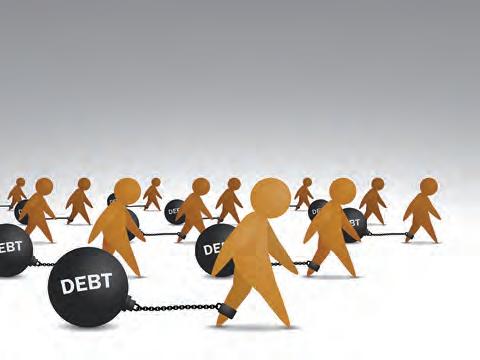“c02DomesticMacroeconomicGoals_PrintPDF” — 2022/7/23 — 6:51 — page 165 — #65
Higher unemployment and weaker economic growth History often shows that when inflation rates are very low and below the RBA’s 2–3 per cent target range, unemployment is relatively higher. There can be a trade-off or inverse relationship. So, in slowing the inflation rate perhaps by increasing interest rates to curb borrowing and spending, the rate of economic growth will weaken, causing unemployment to rise. In other words, very low inflation is a sign of a feeble economy with high unemployment that is operating well below its productive capacity.
O
FS
Another possible connection with unemployment is that when inflation is slow—or worse, there is deflation— there is uncertainty about opportunities and the future, and often returns are depressed. In this climate, there is a reduced incentive to invest, causing unemployment to rise. In other words, some inflation is seen as good for investment and growing employment opportunities. So, when inflation is too low, the RBA may choose to lower interest rates to push inflation back to within its target 2–3 per cent zone.
PR O
Deferred consumption
As mentioned, when inflation is too low and unemployment is rising in a shaky economy, confidence is weak and there is pessimism about the future. This can cause discretionary consumer spending on luxuries (that are not essential right now) to be delayed. Besides, if prices are falling (or not rising), there is no reason to rush into purchases to beat any expected rise in prices. Consumption spending is deferred, slowing spending and making it harder to currently achieve other government goals.
PA
G
E
Another possible reason for deferred consumption is that those who have taken out a home loan at fixed interest rates prior to the drop in inflation or the onset of deflation (where wages may fall), find that debt repayments become more burdensome, causing consumption of luxuries to be deferred. Unlike during periods of rapid inflation, deflation means that the face value of debt to be repaid does not decrease. Individuals with fixed rate home loans gain no relief from any subsequent reductions in interest rates and hence, have no increase in their cash flow available to increase consumption spending on other goods and services.
Resources
CO RR EC
Resourceseses
TE
D
Furthermore, deflation can cause the market value of assets like property to fall so their owners do not feel as wealthy. This too can cause some people to defer their consumption spending on non-necessities to a later date, slowing AD and economic activity.
Weblinks Inflation Nominal vs real, unemployment and inflation Inflation: ‘Why play leap frog?’
2.9 Activities
U
N
Students, these questions are even better in jacPLUS Receive immediate feedback and access sample responses
Access additional questions
Track your results and progress
Find all this and MORE in jacPLUS
TOPIC 2 Domestic macroeconomic goals
165

































